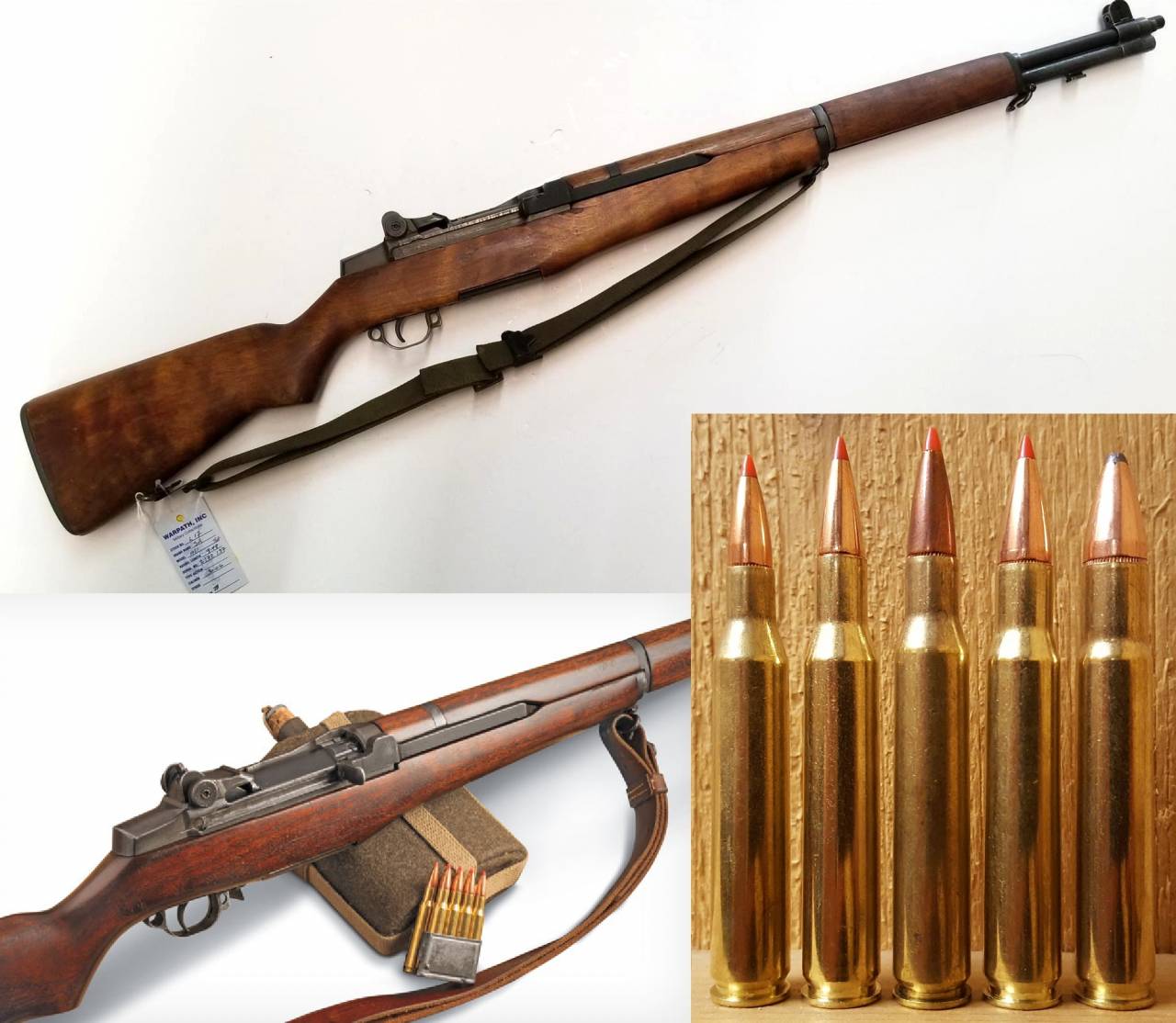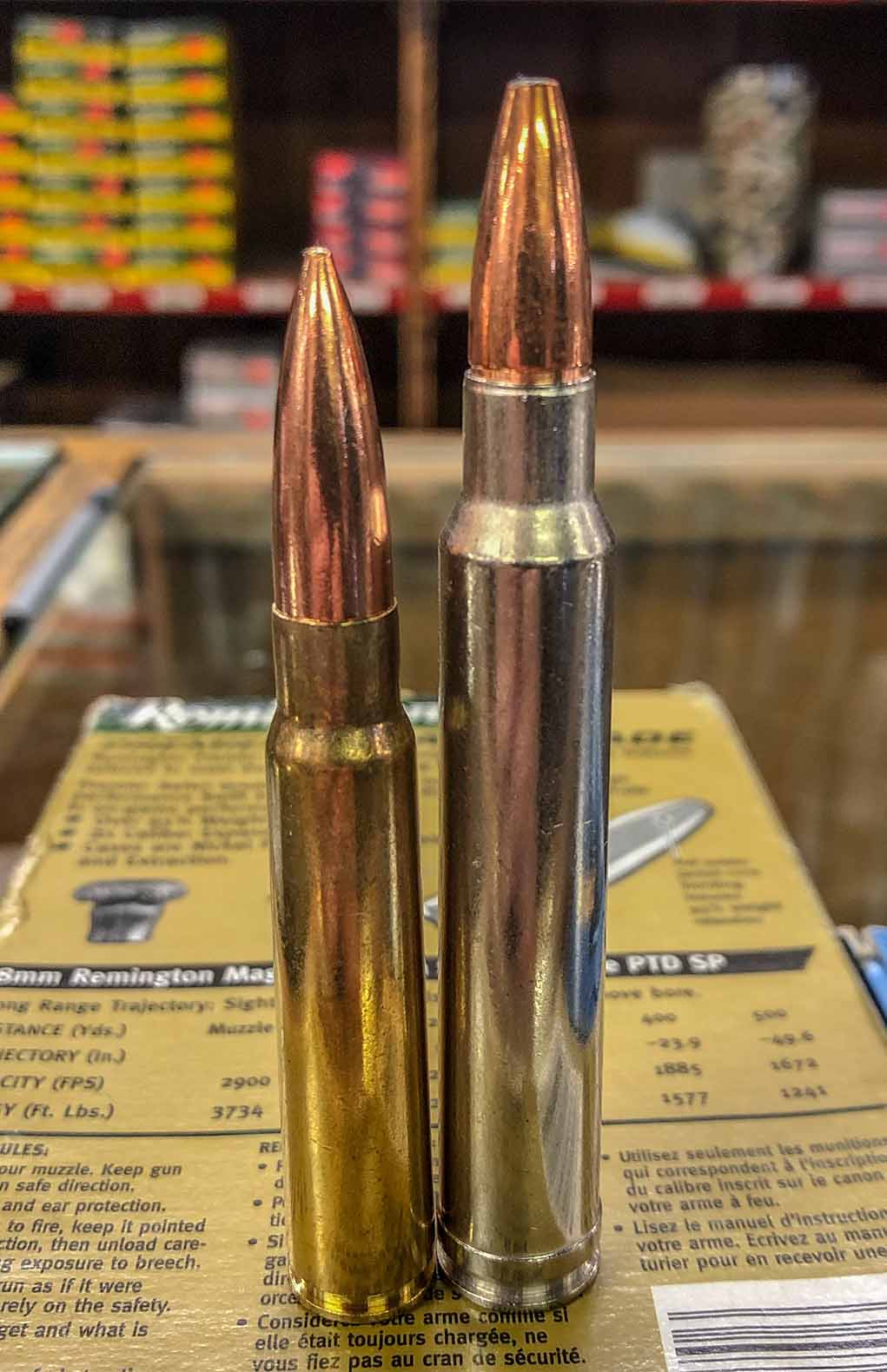6.8 Mm Ammo - The 6.8 mm Remington Special Purpose Cartridge (6.8 SPC, 6.8 SPC II or 6.8 × 43 mm) is a rimless intermediate cartridge developed by Remington Arms in collaboration with the United States Army Firepower Unit and members of the US Special Operations Command.
Possibly replacing the 5.56 NATO cartridge in the short rifle (SBR) and carbine. Based on the Remington .30 cartridge,
6.8 Mm Ammo

It is halfway between the bore diameter of 5.56×45mm NATO and 7.62×51mm NATO. It uses the same diameter bullet (usually not the same mass) as Winchester's .270 hunting cartridge.
German Ww2 7.92mm Headstamps
The 6.8mm SPC cartridge is designed to address the terminal ballistic deficiencies of the 5.56x45mm NATO cartridge, which is in use by the armed forces of all NATO countries.
The cartridge was the result of the Enhanced Rifle Cartridge program. The 6.8 SPC (6.8×43mm) was originally developed by Master Sergeant Steve Holland and Chris Murray, a marksman in the US Army sniper unit.
They offer superior downrange lethality compared to the 5.56 NATO/.223 Remington in M16 model service rifles with minimal loss of magazine capacity and negligible increase in recoil.
The program began the design using a .30 Remington case that was modified to fit a lgth magazine that would fit the magazines of M16 rifles and carbines currently in service with the US Army.
Blackout: 300 Blk's Big Brother — Anachrobellum
In tests comparing different bullet calibers using the .30 Remington case, Holland and Murray found that the 6.5 mm caliber projectile had the best accuracy and penetration. Historical data goes back decades from outside the US military and terminal ballistic tests, but the 7. .mm projectile had better terminal capability. The combination of cartridge, powder charge, and projectile easily outperformed the Soviet 7.62×39mm and 5.45×39mm cartridges, and the muzzle velocity of the new cartridge proved to be about 61 m/s (200 ft/s) faster than the 7.62 x . 39.
The 6.8mm Remington SPC was designed to perform better in short-barreled CQB rifles after the loss of performance from the 5.56 NATO, when the M16A4 was switched from a rifle configuration to the Currt M4 carbine. The 6.8 SPC delivers 44% more energy than the 5.56mm NATO (M4 configuration) at 100-300 meters (330-980 ft). The 6.8mm SPC doesn't match the ballistics of the 7.62×51mm NATO cartridge, but it has less recoil, is said to be more controllable in rapid fire, and is lighter, allowing users to carry more ammunition than would otherwise be possible. larger caliber round. The 6.8mm adds about 2,385 J (1,759 ft⋅lbf) of muzzle pressure with a 7.5 gram (115 g) bullet. By comparison, the 5.56×45mm cartridge (which the 6.8 is designed to replace) gets about 1,796 J (1,325 ft⋅lbf) with a 4.0 g (62 g) bullet, giving the 6.8 mm of terminal ballistic advantage. 5.56mm at 588 J (434 ft⋅lbf). One of the main features of this cartridge is that it is designed for a carbine rifle with a barrel shorter than the standard length of the rifle (typically 41 cm (16 in)). Round increases only about 7.6–10.7 m/s (25–35 ft/s) per 25 mm barrel length over a standard 410 mm (16 in) barrel (all else being equal) for a barrel length of approx. 560–610. mm (22-24 inches) with no gain or loss of accuracy. It also works well on rifles with barrels less than 410 mm (16 inches). In direct development (season 2008–2012), the 6.8 SPC's performance is increased by about 61–91 m/s (200–300 ft/s) thanks to ammunition manufacturer Silver State Armory LLC (SSA) and a few companies. custom rifle builders and proper chamber design and barrel specifications. The 6.8mm Remington SPC cartridge weighs 16.8–17.6 grams (259–272 g), depending on manufacturer and load. In addition, LWRC, Magpul and Alliant Techsystems (ATK) introduced a new AR-15 designed for the 6.8 SPC, which allows for the proprietary 6.8 Magpul P-mag and 5.9 cm (2.32 in) cartridge case. The Personal Defense Weapon (PDW), known as the "Six8", is an SPC II with a 1:250 mm (10 in) twist and is capable of using all SPC 6.8 factory ammunition.
Typical trajectory data for carabiner and drop and calculated speed at sea level zero at 91 m (100 yd).

This section requires additional citations for verification. Please help improve this article by adding quotes from reliable sources. Unsourced material can be challenged and removed. Find source: "6.8mm Remington SPC" - News · Journal · Book · Scholar · JSTOR (August 2021) (Learn and what to delete this message template)
Mm Rem Spc
In late 2004, the 6.8×43mm SPC was said to be performing well in the field in special operations against enemies.
However, the conventional US military did not use the cartridge. It has not been approved for widespread use due to opposition from officials.
The 6.8 SPC is designed for the best terminal efficiency in the shortest urban combat area experienced in Iraq. As the fighting in Afghanistan began to intensify, explosions began to occur at greater distances, which is when the 6.8 SPC began to decline. Experiments showed that the relatively short 6.8mm bullets became ineffective at longer ranges.
In 2007 US SOCOM and the US Marine Corps decided not to chamber the weapon in 6.8mm due to logistical and cost issues.
True Velocity's Composite Cased 6.8mm Cartridge, An Insight Of Future Ammo
While there are many rumors of the cartridge being evaluated by several major federal and local law enforcement agencies, the US Drug Enforcement Administration has allowed individual agencies to purchase the M6A2 D-DEA - which uses 6.8mm Remington's SPC - as an authorized option for duty. weapons they In 2010, the Jordanian state-owned arms manufacturer KADDB announced that it would manufacture 6.8 mm rifles and carbines for the Jordanian army.
There is also a contract between LWRC, Magpul, Alliant Techsystems and the Saudi Royal Guard for about 36,000 Six8 PDWs and a quantity of ATK/Federal XD68GD (90gr Gold Dot "practice" ammo) and proprietary Magpul 6.8 Pmags specifically for this for. LWRC Six8.
The first major manufacturer to offer a 6.8mm version of the Remington SPC chambered AR-15 was Barrett Firearms Company, which offered the Barrett M468 and later the REC7. By 2007, most major manufacturers of AR-15-style rifles for the civilian firearms market offered rifles in this caliber. Round AR receiver upper chamber assemblies are manufactured by several smaller companies, including Daniel Defse. Ruger Firearms no longer produces the 6.8mm for the piston-fired version of the Ruger SR-556 AR-15.

Stag Arms hunter and tactical models use a new chamber (SPC II) with specific rotation rates for higher pressure loads, as well as upper receivers in left-handed configurations. Rock River Arms has the LAR-6.8 X Series rifle and up. Microtech Small Arms Research offers their version of the Steyr AUG in version 6.8. Robinson Armament Co. offers the XCR-L in a 6.8 version that can be easily converted to 6.8, 5.56 and 7.62×39. Bushmaster has supplied the 6.8 SPC II conversion kit to the market since October 2018. Ruger Firearms has brought their Mini model -14 ranch rifle in this round for many years; From left to right 7.92×33mm Kurz, 7.62×39mm, 5.56×45mm NATO, 7.62×51mm NATO, .303 British, 6.5×55mm Swedish, 7.92×57mm Mauser and .30-06 Springfield military cartridges
Spc Vs 308 Win: Which One Is Better?
Germany, Great Britain, Spain, Czechoslovakia, Poland, China, Dominican Republic, Yugoslavia, Ottoman Empire, Turkey, Iran, Egypt and many other countries.
) is a rimless bottled rifle cartridge. The 7.92×57mm Mauser cartridge was adopted by the German Empire between 1903 and 1905 and was the German service cartridge in both world wars. At the time, the Mauser 7.92×57mm cartridge was one of the world's most popular military cartridges. In the 21st year, sports and hunting cartridges that are manufactured in factories in Europe and the United States are still popular.
The subcartridge on which the 7.92×57mm Mauser is based was introduced in Germany in 1888 as the Patrone 88 (cartridge 88) or M/88 (along with the Gewehr 1888 service rifle). It was the first generation smokeless propellant cartridge designed by the German Gewehr-Prüfungskommission (G.P.K.) (Rifle Test Commission) when the new smokeless propellant introduced as Poudre B in the 1886 8mm Lebel model revolutionized military rifle ammunition. The M/88 cartridge contained 2.75 g (42.4 g) of single-base (nitrocellulose-based) smokeless powder and a relatively heavy 14.7 g (227 g) round-tipped ball with a diameter of 8.08 mm (0.318 in). . in). The M/88 bore was originally 7.90 mm (0.311 in) and 8.10 mm (0.319 in) in diameter. The M/88 barrel bore specification was changed in 1894–1895 to 7.90 mm (0.311 in) land diameter and 8.20 mm (0.323 in) to improve accuracy and reduce barrel wear on the M/88 chamber arm.
The German government led the effort to further improve the performance of the M/88 military ammunition and the service weapon using the M/88 after several stages of development led to official approval on 3 April 1903 by the Gewehr-Prüfungskommission. chambered in a redesigned 7.92×57mm Mauser. In addition to the chamber, the bore (named "S-hole") was also designed in terms of dimensions, because the new bullet with a shorter cylindrical part reduced the bearing surface, which required an increase in diameter and depth of the barrel (making the new cartridge not completely interchangeable with the old one).
Sold Price: 13 Rounds Of 8mm Mauser Ammo
The Model 1903 S Patrone (S ball cartridge) was loaded with a lighter 9.9 gram (153 g) pointed Spitzgeschoß (arrowhead).
68 mm bottom bracket, mm 68, 68 in to mm, 68, 68 mm to inches, 68 mm ring size us, ammo storage, 40 mm ammo can, 50 mm ammo can, 68 mm ring size, 68 caliber in mm, 68 mm circumference ring size
0 Comments